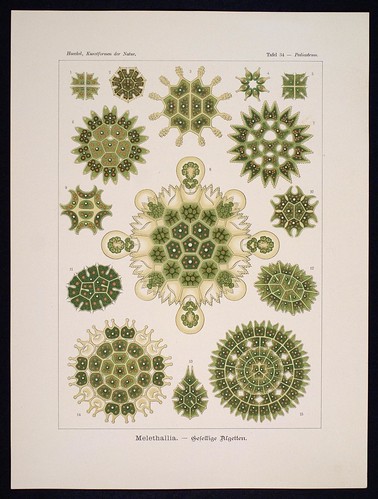Theorem: the net displacement during one atomic cycle is
$\Delta r \left( \sf{\Omega} \right) = \lambda$
To obtain this, note that since there are eight sub-atomic events, the phase angle of the $k^{\sf{th}}$ sub-atomic event is given by
$\begin{align} \theta_{ k} = \theta_{ \sf{0}} + \frac{k \pi }{ 4 } \end{align}$
Without loss of generality let $\theta_{\sf{0}} = 0$ so that
$\begin{align} \sin{2\theta} = \begin{cases} +1 \; \; &\sf{\text{if}} \; \; &k = 1 \; \sf{\text{or}} \; \mathrm{5} \\ \; \; 0 \; \; &\sf{\text{if}} \; \; &k = 2, \; 4, \; 6 \; \sf{\text{or}} \; \mathrm{8} \\ -1 \; \; &\sf{\text{if}} \; \; &k = 3 \; \sf{\text{or}} \; \mathrm{7} \\ \end{cases} \end{align}$
and
$\begin{align} \cos{2\theta} = \begin{cases} +1 \; \; &\sf{\text{if}} \; \; &k = 4 \; \sf{\text{or}} \; \mathrm{ 8} \\ \; \; 0 \; \; &\sf{\text{if}} \; \; &k = 1, \; 3, \; 5 \; \sf{\text{or}} \; \mathrm{7} \\ -1 \; \; &\sf{\text{if}} \; \; &k = 2 \; \sf{\text{or}} \; \mathrm{6} \end{cases} \end{align}$
Then by substitution the displacement of $\mathbf{ A}$ is given by
$\begin{align} dx = \delta _{\hat{m}} \frac{ R }{8} \begin{cases} +1 \; \; &\sf{\text{if}} \; \; &k = 1 \; \sf{\text{or}} \; \mathrm{5} \\ \; \; 0 \; \; &\sf{\text{if}} \; \; &k = 2, \; 4, \; 6 \; \sf{\text{or}} \; \mathrm{8} \\ -1 \; \; &\sf{\text{if}} \; \; &k = 3 \; \sf{\text{or}} \; \mathrm{7} \\ \end{cases} \end{align}$
$\begin{align} dy = \delta _{\hat{e}} \frac{R}{8} \begin{cases} +1 \; \; &\sf{\text{if}} \; \; &k = 4 \; \sf{\text{or}} \; \mathrm{ 8} \\ \; \; 0 \; \; &\sf{\text{if}} \; \; &k = 1, \; 3, \; 5 \; \sf{\text{or}} \; \mathrm{7} \\ -1 \; \; &\sf{\text{if}} \; \; &k = 2 \; \sf{\text{or}} \; \mathrm{6} \end{cases} \end{align}$
and
$\begin{align} dz = \frac{ \lambda }{\,8 \,} \end{align}$
where $\lambda$ is the wavelength, $R$ is the orbital radius, $\delta _{\hat{m}}$ is the magnetic polarity and $\delta _{\hat{e}}$ is the electric polarity. These displacements can be used to evaluate changes in the position of $\mathbf{ A}$ as follows. The variation in the abscissa during one atomic cycle is
$\begin{align} \Delta x _{\sf{\Omega}} &= x_{ f} - x_{ i} = \left( x_{ i} + \sum_{k=1}^{8} dx_{ k} \right) - x_{ i} = \sum_{k=1}^{8} \; dx_{ k} \\ &= \delta _{\hat{m}} \frac{R}{8} \left( 1+0-1+0+1+0-1+0 \vphantom{\sum} \right) \\ &=0 \end{align}$
The change in the ordinate is
$\begin{align} \Delta y _{\sf{\Omega}} &= y_{ f} - y_{ i} = \left( y_{ i} + \sum_{k=1}^{8} dy_{ k} \right) - y_{ i} = \sum_{k=1}^{8} \; dy_{ k} \\ &= \delta _{\hat{e}} \frac{R}{8} \left( 0-1+0+1+0-1+0+1 \vphantom{\sum} \right) \\ &=0 \end{align}$
And the change in position along the polar axis is
$\begin{align} \Delta z _{\sf{\Omega}} &= z_{ f} - z_{ i} = \left( z_{ i} + \sum_{k=1}^{8} dz_{ k} \right) - z_{ i} = \sum_{k=1}^{8} \; dz_{ k} \\ &= \delta _{z} \frac{ \lambda }{8} \left( 1+1+1+1+1+1+1+1 \vphantom{\sum} \right) \\ &= \delta _{z} \lambda \vphantom{\lambda^{2}} \end{align}$
So over one full atomic cycle, the separation vector between initial and final sub-atomic events is
$\Delta \bar{r} \left( \sf{\Omega} \right) = \left( \Delta x _{\sf{\Omega}} , \ \Delta y _{\sf{\Omega}} , \ \Delta z _{\sf{\Omega}} \right) = \left( 0, \ 0, \ \delta _{z} \lambda \right)$
And since the distance between events is given by the norm of their separation
$\Delta r \equiv \left\| \, \Delta \bar{r} \vphantom{\sum^{2}} \, \right\|$
we get

